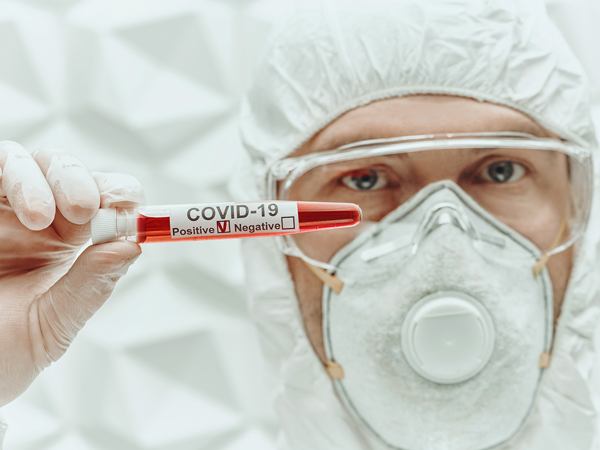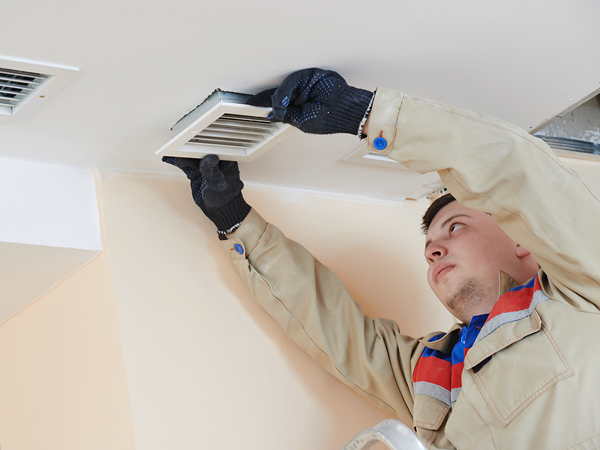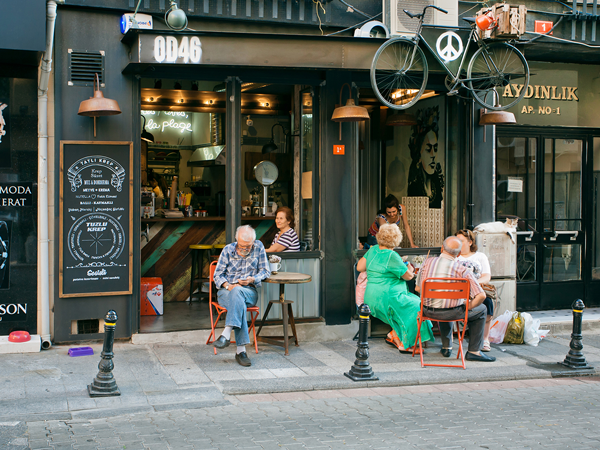Scientists recognize the leading role of ventilation in the fight against the spread of COVID-19
Today’s widely used measures to control the spread of SARS-CoV-2 coronavirus infection may not be sufficiently effective, and the role of ventilation in the new conditions, on the contrary, may become crucial. This is the conclusion reached by the authors of an article published in The Lancet, a broadsheet international medical journal.
COVID-19 coronavirus disease has been attacking the planet for a year and a half and is not going to retreat yet. During this time, scientists around the world conducted a lot of researches aimed at comprehensively studying the causative agent of the SARS-CoV-2 virus and the ways of its spread. As a result of these studies, experts have concluded that the dominant route of spread of the virus is an airborne. This way means the following: the virus enters the external environment in large quantities together with microdroplets of saliva and mucus secreted by a sick person when coughing and sneezing. Since such droplets have their own weight, they quickly enough settle on surfaces within a radius of up to 1.5 m from the source. In accordance with this conclusion, experts have developed a number of effective preventive measures to combat the disease, including the wearing of medical masks, maintaining the necessary distance between people, reducing social contacts, etc. However, recent scientific data cast doubt on the leading role of the airborne channels of infection.
In April this year, The Lancet published an article with compelling arguments for the predominant airborne transmission route of SARS-CoV-2. In the article, the authors give the data allowing for the conclusion that the viruses are predominantly spread by aerosols, — the tiny particles that are released by infected people even during normal conversation. Such particles can remain in the air for a long time and spread out over tens of meters. Such a conclusion requires some rethinking of previously adopted rules and recommendations to counteract COVID-19, particularly in terms of the use of indoor ventilation systems, which can now be a decisive factor in the fight against the spread of the disease.
10 arguments in favour of the airborne route of viral infection spread
1. The main spreaders of the disease are super-distributors.
The main drivers of the COVID-19 pandemic were the so-called super-distributors — people who infect far more people than the average patient. The researchers conducted a detailed analysis of people’s behaviour and interactions during mass virus transmission at concerts, cruise ships, nursing homes, penitentiary facilities and other institutions, studied the configuration of rooms and ventilation systems and found a definite pattern: the virus was transmitted over long distances to a large number of people from one infected person. Simultaneous infection of a large number of people from a single patient cannot be explained by drip spread of the pathogen, but by aerosol transmission only.
 An example of mass infection with the SARS-CoV-2 virus is the case with the passengers of the Diamond Princess cruise liner. After the first COVID-19 patient was detected on the ship, it was quarantined. As a result, it turned out that 712 out of 3711 passengers of the ship were infected with SARS-CoV-2, i.e., almost every fifth person.
An example of mass infection with the SARS-CoV-2 virus is the case with the passengers of the Diamond Princess cruise liner. After the first COVID-19 patient was detected on the ship, it was quarantined. As a result, it turned out that 712 out of 3711 passengers of the ship were infected with SARS-CoV-2, i.e., almost every fifth person.
2. There are cases when the virus was transmitted from person to person without direct contact.
In quarantine hotels there have been cases of transmission between people who were in neighbouring rooms and had never been in contact with each other before. Long-distance airborne transmission is traditionally considered to be proven if the possibility of local airborne transmission through close contact has been completely excluded. In the case of the hotels, there was no close contact between people, so cases of infection can only be explained by the spread of aerosols.
3. A large proportion of all infections occur in people who do not cough or sneeze.
Most of the world’s coronavirus infections (up to 59%, according to various estimates) come from people who transmit the disease asymptomatically or during the incubation period. These people usually don’t cough or sneeze, but they actively spread the viral disease. It is not possible to explain this fact in terms of the droplet of infection spread. The only explanation is the airborne route of transmission.
4. Transmission is easier indoors than outdoors and decreases with better ventilation
The risk of SARS-CoV-2 infection is much higher indoors than outdoors and is significantly reduced when ventilation is working. These two observations are also in good agreement with airborne transmission of the virus.
5. Infections occur in clinics where protection against airborne transmission is used
In world practice, many cases of infection among medical personnel in clinics have been recorded, where strict safety measures were observed in contact with patients. As a rule, the doctors used medical masks, respirators, and eye shields, personal protective equipment designed to protect against breathing microdroplets but not the smallest aerosols entering the respiratory organs.
6. Viable SARS-CoV-2 viruses are detectable in the air.
The authors of the article state the fact that the viable virus was detected in the air — in particular, in samples of air from the rooms where patients with COVID-19 were staying, as well as from the car of the infected person. This fact confirms the possibility of aerosol transmission of the infection by air.
On the other hand, the authors admit that the findings of different studies differ in the detection of the virus culture in the air, and there is an explanation for that. According to the researchers, detecting a viable virus in air is technically difficult for a number of reasons, among them the limited efficiency of some sampling methods, dehydration of the virus during collection or damage caused by shock loads resulting in loss of viability, and other reasons.
To prove their conclusion, the authors cite the example of unsuccessful attempts to detect airborne pathogens of other viral diseases. According to them, the well-known measles and tuberculosis viruses have also never been cultured from room air before.
7. Virus was found in air filters of clinics where droplets cannot get
Researchers cite cases of SARS-CoV-2 being detected in air filters of air filtration systems in clinics with COVID-19 patients. The filters were placed far away from the patients, so the droplets and splashes they emitted could not get there. The virus could have reached such a place only with aerosols.
8. Animal experiment proves aerosol transmission
Another convincing evidence in favour of airborne transmission was an experiment with ferrets housed in different isolated cages connected to each other by air-ducts. As a result, the experiment documented the transmission of SARS-CoV-2 from one animal to another through the ventilation system. As the air-ducts had curves, the possibility of virus transmission by drip was completely excluded.
9. There are no convincing arguments against airborne transmission.
At the present moment, there are no studies providing convincing evidence against airborne transmission of SARS-CoV-2. There are examples of people who have managed to avoid infection through close contact with patients. However, this situation can be explained by failure to meet certain conditions for effective transmission — for example, the release of insufficient amounts of viruses by a sick person. It is known that this amount can vary from person to person and can differ by several orders of magnitude, as can be seen from studies of super-distributors. The state of the air environment is also of great importance in the transmission of the virus: for example, active air exchange in the room due to ventilation significantly reduces the risk of infection.
10. The evidence for prioritizing other routs of SARS-CoV-2 transmission is not very convincing.
The authors of the article emphasize that there are no convincing arguments for the importance of other known routes of viral transmission today. For example, the main evidence for the priority of drip transmission of SARS-CoV-2 is the high rate of transmission between people who are close to each other. However, this conclusion does not contradict the theory of airborne aerosol transmission of the virus. Indeed, the greater the distance to the sick person, the lower the chance of infection, which is traditionally explained by the limited ability of droplets, which are unable to travel long distances and settle on surfaces within 1.5 m of the sick person. Nevertheless, the same picture can be observed in case of viruses transfer by aerosols, because infected air dissolves with distance with clean air masses and the number of viruses in it significantly decreases.
What does it change?
The authors of the study claim that there is now convincing evidence that SARS-CoV-2 is actively spreading through the airborne route. According to experts, all other known routes of transmission also contribute to the spread of the virus, but the airborne route is the dominant one. At first glance, this conclusion changes little in our understanding of the mechanism of SARS-CoV-2 spread, since both droplets and aerosols are airborne. Nevertheless, it completely shifts our priorities in the prevention of the disease.
If the virus is predominantly spread with large droplets of respiratory secretions that quickly settle on surfaces, the main preventive measures in this case are limiting direct contacts between people, using protective masks and respirators, physical distancing, cleaning and disinfecting surfaces, creating physical barriers to transmission, etc. But if the virus is mainly transmitted with aerosols, it is possible to become infected by inhaling them at a much greater distance. To reduce the spread of the virus through airborne aerosols, measures to prevent inhalation of infectious aerosols must be implemented. Such measures include ventilation, air filtration, reducing the number of people and the time they stay indoors, proper use of medical masks indoors, and a higher level of protection for medical personnel and pharmacists. The authors of this article attribute the leading role in controlling the spread of SARS-CoV-2 to ventilation.
Ventilation ensures a constant flow of indoor air and the necessary air exchange that prevents an increase in the concentration and accumulation of aerosols with pathogens. The continuous supply of clean and fresh air from the street and the exhaust air draft immediately carries aerosols present in the airspace of the room to the outside. Such a simple but effective solution allows the room to be continuously cleaned of viral pathogens, which eliminates the focus of infection and significantly reduces the likelihood of COVID-19 disease.
Based on the information presented in the article, several conclusions can be made, which will be of primary interest to owners and managers of various facilities with a large concentration of people.
In offices, factories, and warehouses, regularly surfaces disinfecting and keeping a social distance between employees are not sufficient measures to combat the spread of SARS-CoV-2. Ventilation of the premises by forced ventilation systems is also an important factor here.
In cafes and restaurants, placing tables further apart from each other is not a sufficient protective measure. The optimal solution here may be to serve customers on outdoor summer terraces and areas during the warm season. In enclosed areas, ventilation is important, and can either be provided by opening windows at regular intervals or by forced ventilation systems.
In stores, shopping malls, and shopping and recreation centres, in addition to maintaining the necessary distance in queues, wearing masks, and other preventive measures, the necessary ventilation of the rooms should be ensured. If forced ventilation systems are available, continuous operation is essential. If it is possible to control the capacity of these systems, the air flow rate can be varied (e.g., increased) according to the number of visitors.
In kindergartens and schools, it is difficult to ensure that children always keep a social distance and wear their masks correctly. In this case, regular ventilation is an important preventive measure against the spread of SARS-CoV-2. The best solution is to use centralized or decentralized ventilation systems that ensure constant air exchange and eliminate draughts. In the absence of such systems, traditional ventilation by opening windows should be performed as often as possible.








